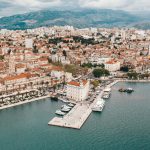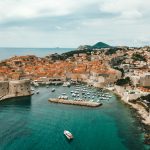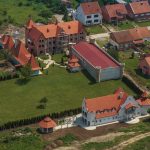The numerous conservation and restoration works in the Split Pjaca, as well as the initiatives of private owners on objects in the area, testifies to the fact that the famous square will shine again, reports Slobodna Dalmacija on January 22, 2019.
While we know that Pjaca is still one of the central squares in the city today, it has transformed into one big construction site. Fortunately, its presence today hopefully guarantees a better future.
Most of the work is carried out under the supervision of the Ministry of Culture, i.e., the Conservation Department in Split. Works are taking place on the old town hall, the hotel “Central” is seeing a renovation, and it is expected that the City and the private owner of the “Morpurgo” bookstore will reach an agreement so that the cultural good will open its doors again.
Furthermore, the Nakić house, whose ground floor has long been a bookstore, is to be renovated, and one shop inside the Pjaca has already returned its exterior to its appearance at the beginning of the last century.
From the 13th century, the Pjaca was the center of the city; the pulse of life in the city. The houses of the nobility and the communal palace gave the square a representative look, and before the Venetian restoration of the square in the 15th century, which demolished the church of Sv. Lovre, the square was enlarged to the north.
The buildings of the Papalić palace, the homes of Marulić and Karepić and the other residences of old Split families, gave a vibrant new look to the early Renaissance square, although it was half the size of the area today.
In the southeastern part, there was a block of houses that, several centuries later, were redeemed and cleaned by members of the noble Capogrosso family. On the ground floor of these houses were shops, some of which were renovated in the 19th century to cafe “Seleban”, after “Troccoli”.
Between the two wars, the “Central” hotel was built in the Pjaca – and after many years of neglect, its renovation began last autumn, which was preceded by extensive research and technical documentation. After the completion of the works, expected in the summer of 2021, the hotel will be restored to its old, but completely refurbished appearance.
In the middle of the 19th century, the northwest part of the Pjaca was demolished, where there was a monumental section of the Venetian Rector’s Palace with a theater. The square was extended to the west from the Pavlovć Palace, today the Hotel Judita, to the Nakić house, which was erected at the end of 1900 according to the project of archaeologist Špiro Nakić.
“Only the town hall remains from the Rector’s Palace complex, which was restored in a detached building according to historicist designs from the end of the 19th century,” explains Dr. Radoslav Bužančić, Head of the Conservation Department of the Ministry of Culture.
“Its modern renovation is under preparation, technical documentation has been completed and a thorough remodel of the city’s exhibition palace is about to begin. The City Hall gallery will receive better working conditions, lifts for disabled people, and completely restored spaces without columns and interior enclosures that have excessively burdened the exhibition space.
The rotation of the business premises of the former famous bookstore Morpurgo, which became a symbol of Split’s people, is also under preparation. After the reconstruction is completed, this area will continue being a bookshop, the same as in the western part of the square, in the Nakić house, which will also be completely renovated. On the ground floor, where there was the ‘Miroslav Krleža’ bookshop, apart from shopping facilities, one bookstore will continue to operate,” says Bužančić.
Vlasta Marčić, an architect who is working with a large team of experts on renovating the Central hotel, admits that the Pjaca area, as well as the hotels owned by Anka Kerum, is extraordinarily complicated and demanding because the historical layers cannot be avoided.
Namely, the hotel itself has evident architectural and stylistic traces that lead to the late antiquity in the far past, through the Renaissance until the transition to the 19th and 20th centuries. Therefore, after many years of battles with papers, permits, utility problems, and conservation requirements, they’ll also need some luck.
Translated from Slobodna Dalmacija.
To read more about Split, follow TCN’s dedicated page.







